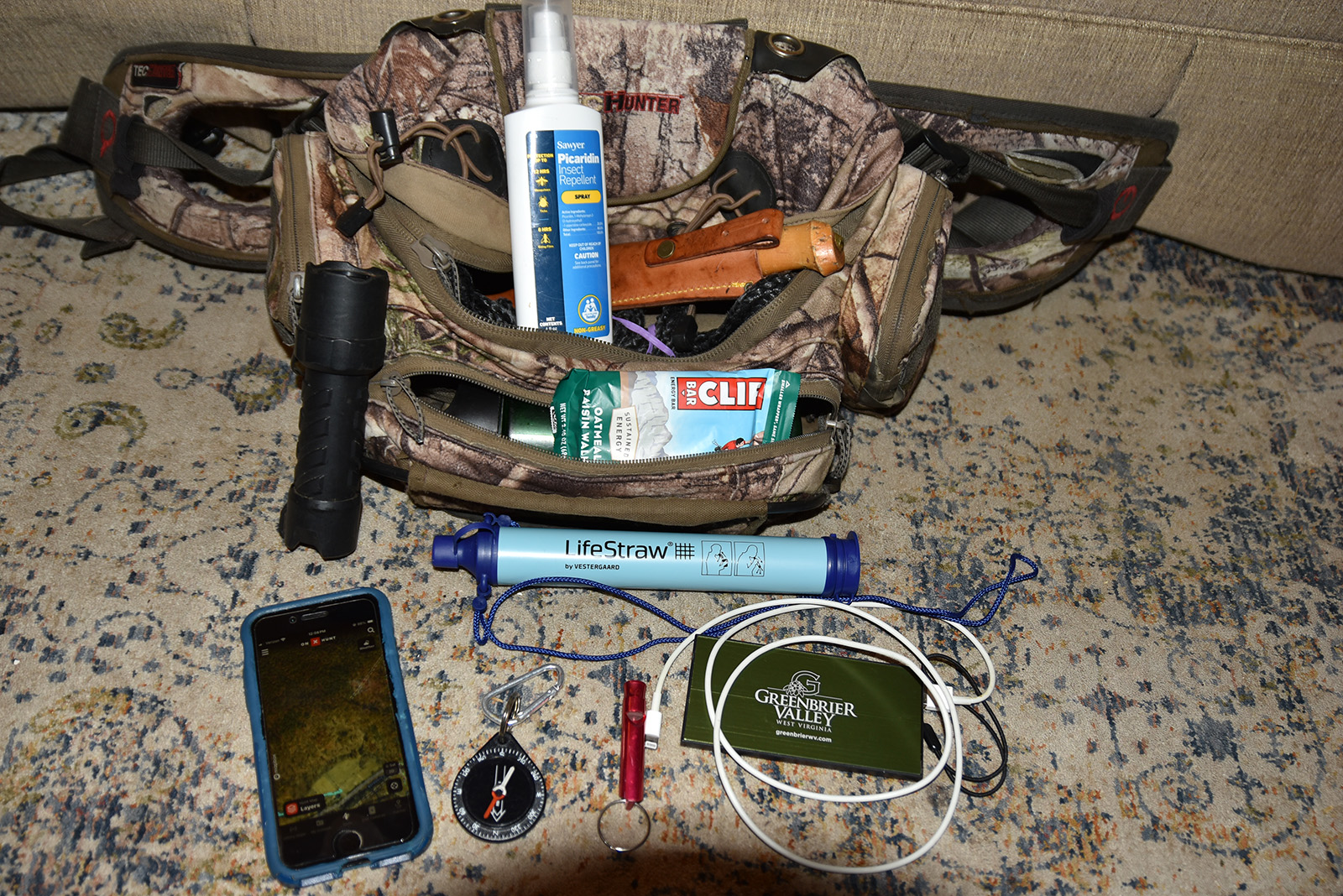Don’t Make These Navigational Mistakes While Afield
By Bruce Ingram
I’ve spent decades navigating through the woods, so it’s very embarrassing to admit that one day this summer I was actually lost for about three hours. I eventually blundered out onto a country dirt road where two Craig Sheriff’s Department members, who were searching for me, eventually picked me up—miles from where I had parked my pickup.
David Hennaman, R-3 Coordinator for the Virginia Department of Wildlife Resources (DWR), noted that both experienced and inexperienced outdoors folks can easily become lost in the woods, but precautions can be taken to avoid this happening.
“To begin, I should say that I’ve gotten lost while in the woods, so I find it understandable that many people feel at least a little bit of panic when they realize that has happened,” Hennaman said. “Unfortunately, a typical reaction is too often to move in a direction that is not necessarily where they should be heading.
“What people should do is sit down, take an inventory of their surroundings, and ask themselves why they are lost,” Hennaman continued. “Also, they should have with them one or more or hopefully all of these items: a GPS, compass, cell phone, personal locator beacon (PLB), extra batteries or rechargers for these things, and a paper map. These are tools that can help people reorient themselves. Ideally, they should have also taken readings when they left their vehicle and when they started on their way back.”
Second, keep in mind that you can become disoriented, as I did, even on parcels where you’ve been before.
“People often think they are on the right track to return to their vehicle or starting point,” Hennaman said. “But all it takes sometimes is to miss one landmark. When you realize that, put down a waypoint or make note of where you are. Then try to return to the spot where you missed your landmark. Also, hopefully, you established a waypoint when you began your return, and that could be helpful, too.”
A third way for us mortals to become confused is not to trust their equipment. Hennaman notes that he has witnessed this happen many times.
“People’s compass, phone, map, or whatever is telling them—correctly—to go in a certain direction, and folks don’t believe it,” he said. “Maybe it’s because they haven’t read the directions on how to use something or they don’t understand the technology.”
Finally, individuals who have become confused can listen for signs of civilization.
“A rooster crowing is a great sound to hear to help people reorient themselves,” Hennaman said. “A dog barking is also good, and obviously hearing a vehicle is great. Head for those sounds of civilization.”
Sergeant Carl Dobbs, a DWR Conservation Police Supervisor, said that Conservation Police tracking team members and K9 handlers regularly respond to search-and-rescue requests. He believes that being prepared and having the right equipment is key.
“Equipment considerations such as navigation tools, clothing, food, first aid kits, applicable medications, and hydration are necessary for any survival situation,” he said. “Having these items and knowing how to use them can bring some comfort in those initial moments of disorientation.”
Dobbs also offers these quick tips.
⦁ Practice with your equipment (such as a GPS) and progress towards your goals.
⦁ Plan and communicate with a friend or family member about where you are going and how long you will be there.
⦁ Knowing how to make a shadow stick compass is a useful skill to have and can help you determine your daytime direction.
⦁ Know your terrain. Check maps for potential hazards and research the area. Even a site a person often goes to can look different at different times of the year due to seasonal changes—and result in disorientation.
⦁ Most missing persons don’t leave their comfort zone with the intention of becoming lost. Prepare to the best of your ability.
A week after I became lost, I returned to that same Craig County mountain. This time, though, when I debarked from my truck, I took readings with my compass and cell phone’s onX app. A waypoint was set, and water, energy bars, and a battery recharger were in my daypack.

A few items worth putting in a daypack from front to back: cell phone with navigation app like onX, compass, whistle, battery charger, flashlight, water bottle, filtration device, energy bar, insect repellent, knife, rope
When I reached my destination on the mountain, I established another waypoint. Then I used the app to retrace my way back to my pickup. I’m grateful for the Craig Sheriff’s Department for helping me that day, but I don’t want to ever bother them again because I was unprepared for a day afield.
Legal Disclaimer:
EIN Presswire provides this news content "as is" without warranty of any kind. We do not accept any responsibility or liability for the accuracy, content, images, videos, licenses, completeness, legality, or reliability of the information contained in this article. If you have any complaints or copyright issues related to this article, kindly contact the author above.
